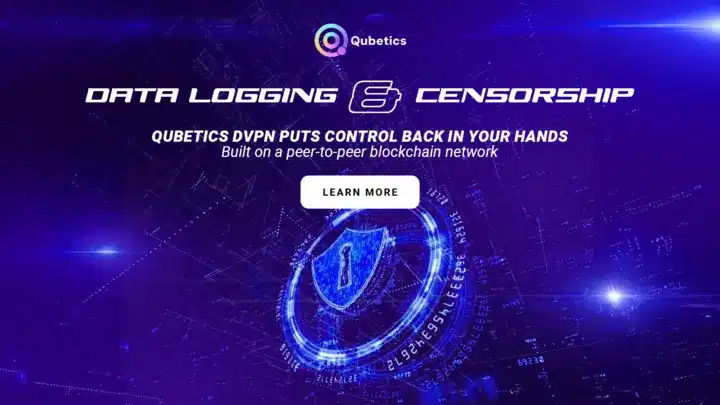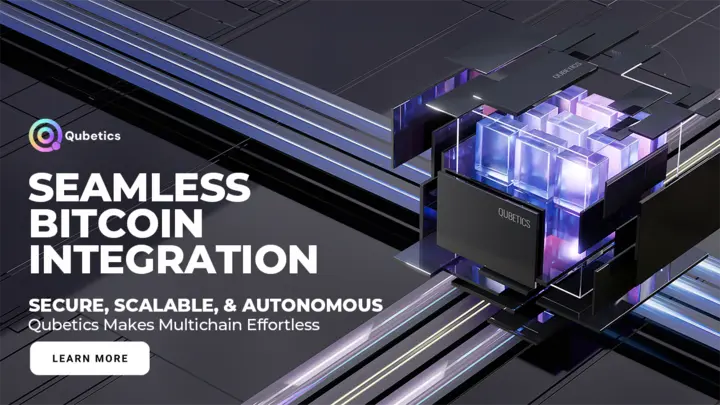How do backers decide which blockchain project to trust when the crypto market never stops transforming? It’s not just about flashy token launches anymore. These days, value comes from proof, traction, tech, utility, and consistent delivery. That’s what makes current developments in Avalanche, Render, and Qubetics particularly compelling. This isn’t speculation. It’s about substance.
Avalanche has seen a sharp spike in daily transactions, thanks to its integration with Nexon’s MapleStory Universe, pushing $AVAX up by 2.84% in 24 hours. Render ($RNDR) also surged by 4.23%, boosted by renewed interest in decentralized GPU rendering and its rising 24-hour trading volume. Amid these shifts, Qubetics ($TICS) is making headlines of its own, closing in on $18 million raised in its ongoing top token presale. But unlike the other two, Qubetics isn’t riding trends. It’s building a foundation that could change how finance works at its core.
Qubetics enters this arena with bold ambitions—to solve what others have glossed over. It introduces real-world asset tokenization, practical cross-border payment infrastructure, and decentralized tools that empower everyday users and businesses alike. That’s not just innovative. That’s transformative.
Qubetics ($TICS): A Top Token Presale That’s Building Real-World Solutions
Qubetics is building a decentralized economic layer for real-world finance. The project has already attracted over 27,500 token holders, selling more than 515 million $TICS tokens at a fixed price of $0.3370. With just 10 million tokens left in its 37th crypto presale stage, this top token presale is edging closer to a limited-supply launch.
What’s fuelling this growth isn’t hype—it’s purpose. Qubetics is focused on solving real-life inefficiencies that traditional and blockchain-based systems still haven’t fixed. Cross-border payments, for example, are still plagued by slow settlement, hidden fees, and banking intermediaries. Qubetics cuts through that. By leveraging its validator-powered ecosystem and native $TICS token, it enables low-cost, near-instant international transactions with no third-party middlemen.

But the real game-changer is the Real World Asset Tokenization Marketplace. Qubetics is building infrastructure that lets people turn physical and intangible assets—property, invoices, equity, intellectual property—into tokenized, tradable financial products. Picture a small medical supplier in Southeast Asia tokenizing future purchase orders to secure funding in real time. Or a creative studio in Toronto selling fractionalised ownership of a film script. Qubetics enables these use cases at scale and across borders, backed by built-in compliance features like KYC and redemption protocols.
This isn’t just DeFi—it’s decentralized capital access. One that opens up new financial lanes for underbanked communities, freelancers, SMBs, and global entrepreneurs who’ve long been excluded from traditional funding avenues.
Add in Qubetics’ bold supply reset—cutting its total tokens from over 4 billion to 1.36 billion, and increasing public allocation to 38.55%—and the scarcity factor becomes part of the appeal. At a fixed price of $0.3370, with a listing jump to $0.40 already locked in, this top token presale doesn’t just hint at upside. It delivers structured, engineered value.
Avalanche ($AVAX): Boosted by MapleStory Universe and Scalability at Scale
Avalanche has always been about speed and scalability, but the recent surge in transaction volume, driven by Nexon’s MapleStory Universe, puts its capabilities on full display. The network processed more daily transactions than Ethereum, showing that its architecture isn’t just fast on paper. It delivers under pressure.
This integration taps directly into Avalanche’s subnet architecture, allowing game developers to build customised chains that optimise for their specific needs. For MapleStory, that means scalable, real-time item minting, digital asset tracking, and on-chain user interactions without latency headaches.
$AVAX responded accordingly, climbing 2.84% in a 24-hour window, with daily trading volume pushing beyond $336 million. It’s a sign that Avalanche isn’t just chasing partnerships for name recognition—it’s enabling scalable use cases that test its architecture in live environments.
Avalanche has also maintained strong support from both institutional backers and decentralized finance developers. Subnets like Spruce, Evergreen, and the ones used by gaming studios show a maturing ecosystem that welcomes enterprise and grassroots developers alike. In a world where many chains overpromise and underdeliver, Avalanche continues to ship consistently.
That said, Avalanche is no longer in price discovery mode. It’s well into its growth curve. At $20.76, the token has stabilised as a mid-cap giant. For backers looking for the next explosive run, Avalanche might not deliver outsized ROI from this point forward, but as a backbone of Web3 infrastructure, it remains a trusted choice.
Render ($RNDR): Powering the Creative Economy Through Decentralized Compute
Render’s story has always been a unique one. While most tokens chase DeFi or NFT hype, Render took a sharp left into decentralized GPU rendering—and it’s starting to pay off. With a 4.23% surge in the last 24 hours and a $43 million trading volume, RNDR is showing renewed momentum.
The premise is simple but powerful. Render connects users who need GPU compute—think 3D animators, AI modellers, VFX artists—with a global network of idle GPU resources. By tokenizing access to this network, Render allows creatives to get high-performance compute at a fraction of traditional cloud costs.
Its decision to migrate to the Solana blockchain further improved performance and reduced fees, making it even more attractive for heavy-use rendering scenarios. Studios and freelancers who once relied on expensive centralised options are now exploring decentralized alternatives, driving long-term demand for RNDR tokens.
Render has also begun expanding into AI workloads, positioning itself at the intersection of artificial intelligence and blockchain infrastructure. With OpenAI and other platforms fuelling GPU shortages globally, Render’s value proposition feels more relevant than ever.
At $3.85, RNDR is still within an accessible range for those looking to enter a growth-oriented token. While it may not be as early-stage as a top token presale like Qubetics, it does offer a unique use case that appeals to a very specific—but rapidly growing—segment of the Web3 economy.

Conclusion: Practical Value is Defining the Future of Crypto
Crypto is evolving. The next phase won’t be defined by hype cycles, meme pumps, or even pure speculation. It will be shaped by practical use cases, value creation, and community-driven design.
Qubetics is leading that charge. With structured tokenomics, real-world applications like cross-border payments and asset tokenization, and a crypto presale designed to empower long-term holders, it stands out as the most promising top token presale in the space. Avalanche continues to deliver enterprise-grade scalability. Render brings decentralized computing into a growing creator economy.
For backers focused on long-term utility, scalability, and financial innovation, these three names deserve a spot on the radar. But those eyeing first-mover advantage might want to look closely at Qubetics. The opportunity is still wide open—but not for long.

For More Information:
Qubetics: https://qubetics.com
Presale: https://buy.qubetics.com/
Telegram: https://t.me/qubetics
Twitter: https://x.com/qubetics
FAQs
- What is Qubetics, and why is it gaining attention?
Qubetics is a Web3 Layer-1 blockchain focusing on cross-border payments and real-world asset tokenization. It’s currently raising funds through a top token presale.
- Why is Render’s move to Solana important?
Migrating to Solana helps Render lower transaction costs and scale its decentralized GPU rendering network more efficiently.
- What makes Qubetics’ tokenomics model unique?
Qubetics reduced its total token supply from 4B to 1.36B and allocated 38.55% to the public, aiming for long-term value and decentralized governance.
- Can Qubetics’ asset tokenization system be used globally?
Yes. Qubetics allows global users to tokenize and trade physical and intangible assets—like real estate, invoices, and royalties—across borders.

